The design of bridges is usually quite a straightforward matter and we mean that literally. However, Rafael Viñoly decided to venture out using unconventional designs. Rafael is an Uruguayan architect who is responsible for designing the bridge that currently spans Laguana Garzón in Uruguay and was recently opened for public use. The bridge has been designed to serve a particular purpose and need.
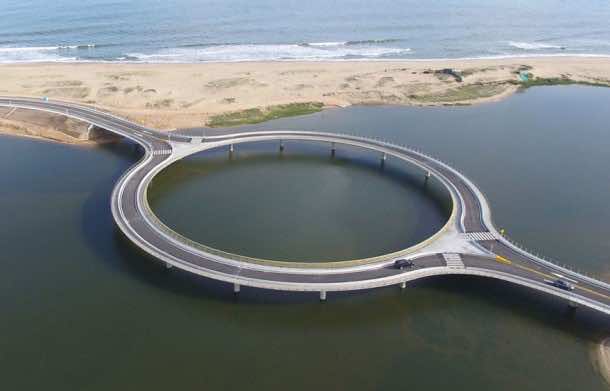
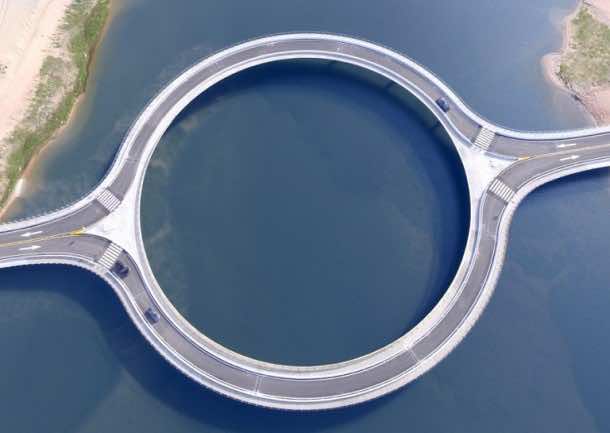
The idea behind this bridge was come up with a way of slowing down traffic, thus allowing the commuters to appreciate the environment that surrounds the bridge. The circular design was finally approved following years of governmental debate and features a radius of 51.5 meters that is bracketed using two straight sections, each measuring 46 meters, at the entrances. The design sports two lanes of traffic while forming a lagoon at it’s center that can be used for fishing.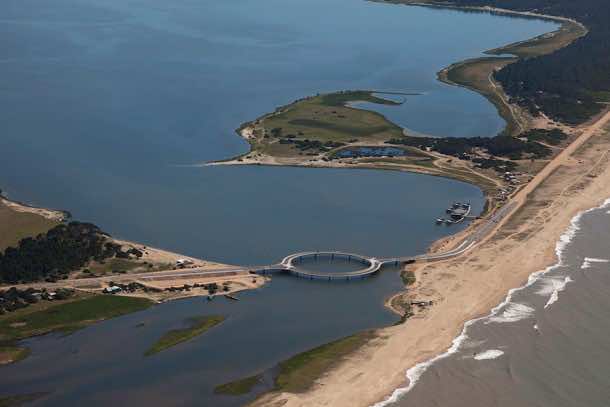
Architect Rafael Viñoly said, “The concept of the Puente Laguna Garzón was to transform a traditional vehicular crossing into an event that reduces the speed of the cars, to provide an opportunity to enjoy panoramic views to an amazing landscape, and at the same time create a pedestrian place in the center.”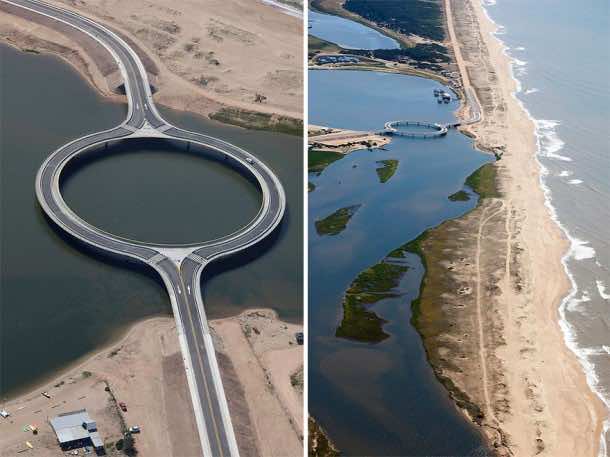
The construction of the bridge began at end of 2014 and was completed in a little over a year. The cost of the project was $11 million out of which $10 million were provided via private funding. This isn’t just an architectural project but was also the need of those who were crossing between Rocha and Maldonado. Previously, cars would have to be loaded onto a raft individually and then traversed to the other end. After the bridge’s construction has been completed, more than 1,000 cars are crossing the bridge every day.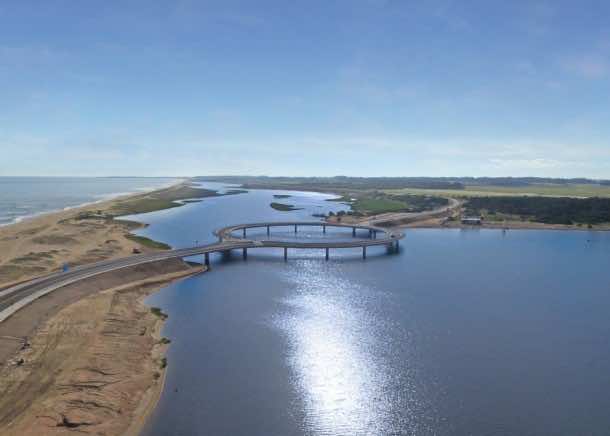
The government of Uruguay is attempting to bring about a new era for the country where the focus lies on developing sustainability and tourism. The country welcomed 2.9 million visitors in 2015, which is quite a steep increase when compared with the previous year. The government is hoping to bring visitors, local and foreign, to the undeveloped coastline of Rocha.
So what do you have to say about this innovative bridge design?


